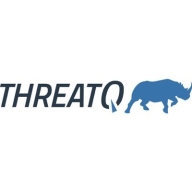

ThreatQ and Cisco Threat Grid are contenders in the threat intelligence market. Cisco Threat Grid seems to have the upper hand due to its extensive features, despite users being happier with ThreatQ's pricing and support.
What features are offered by ThreatQ in comparison to Cisco Threat Grid?ThreatQ users value its threat library, automation capabilities, and efficient threat identification and response. Cisco Threat Grid offers sandboxing, comprehensive malware analysis, and superior malware detection and analysis. ThreatQ excels in managing threat data, while Cisco Threat Grid is known for its in-depth analysis capabilities.
What areas of improvement can be found in ThreatQ in comparison to Cisco Threat Grid?ThreatQ needs better integration with third-party tools, a more scalable solution, and improved documentation. Cisco Threat Grid requires better documentation, a streamlined process for threat intelligence sharing, and enhanced integration options.
How is the ease of deployment and customer service of ThreatQ in comparison to Cisco Threat Grid?ThreatQ offers a straightforward deployment model and responsive customer support. Cisco Threat Grid may require more extensive configuration but provides robust support once set up. Therefore, ThreatQ provides an easier deployment experience, but Cisco Threat Grid compensates with stronger post-deployment support.
What setup costs and ROI can be seen with ThreatQ in comparison to Cisco Threat Grid?ThreatQ is praised for its competitive pricing and strong return on investment, making it attractive for cost-conscious buyers. Cisco Threat Grid is considered more expensive, but users feel its feature-rich offerings justify the higher investment. ThreatQ is seen as providing good value for money, while Cisco Threat Grid offers worthwhile ROI for its extensive features.
| Product | Market Share (%) |
|---|---|
| ThreatQ | 2.6% |
| Cisco Threat Grid | 1.0% |
| Other | 96.4% |

Cisco Threat Grid crowd-sources malware from a closed community and analyzes all samples using proprietary, highly secure techniques that include static and dynamic (sandboxing) analysis. It correlates the results with hundreds of millions of other analyzed malware artifacts to provide a global view of malware attacks, campaigns, and their distribution. Security teams can quickly correlate a single samples of observed activity and characteristics against millions of other samples to fully understand its behaviors in a historical and global context. This ability helps analysts effectively defend against both targeted attacks and the broader threats from advanced malware. Threat Grid’s detailed reports, including the identification of important behavioral indicators and the assignment of threat scores, let you quickly prioritize and recover from advanced attacks.
ThreatQ is a cybersecurity platform designed to enhance threat intelligence operations. It centralizes and manages threat data, allowing organizations to identify and respond to threats more efficiently.
ThreatQ is designed to empower security teams by personalizing threat intelligence and automation processes. It integrates with existing technologies, streamlining data collection and distribution. This promotes efficient detection, investigation, and response to security incidents, improving overall cybersecurity posture and resilience.
What are the key features of ThreatQ?ThreatQ is versatile in industries like finance and healthcare, where cybersecurity is crucial. It facilitates swift threat identification and risk management, essential for protecting sensitive data and complying with industry regulations. Its adaptability allows it to fit into diverse security architectures, making it a valuable asset across sectors.
We monitor all Threat Intelligence Platforms (TIP) reviews to prevent fraudulent reviews and keep review quality high. We do not post reviews by company employees or direct competitors. We validate each review for authenticity via cross-reference with LinkedIn, and personal follow-up with the reviewer when necessary.